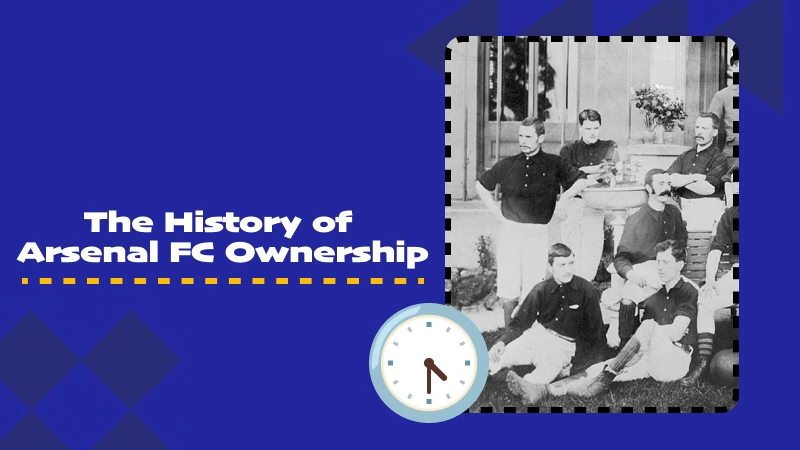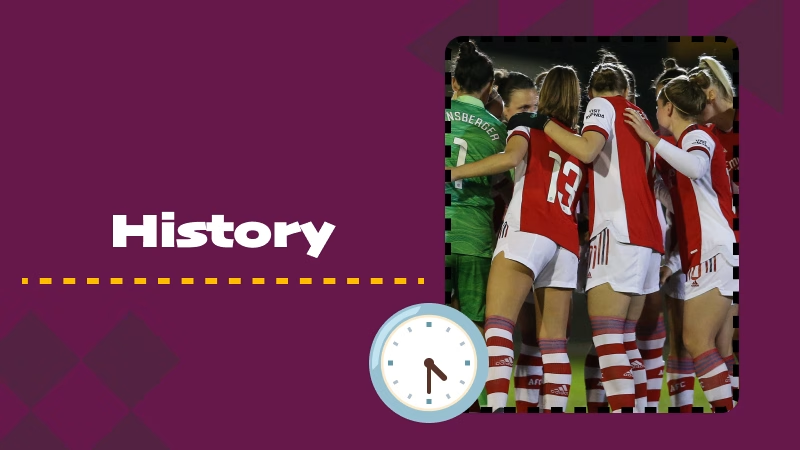Leadership Legacy: The Evolution of the Arsenal Captaincy
Captaining a football club is huge. More than the armband, a captain leads his side out of the tunnel and motivates them on match days. The job of a club captain is one that goes beyond the responsibility on and off the field in a game as globalized and followed as football, with Arsenal Football Club’s version carrying even more weight.
Arsenal are one of the greatest football clubs in Legends with a history to match. The Arsenal captain is a role that has always been of great significance. The Gunners skipper has been a true leader throughout his time with the club, whether that be from the days of Royal Arsenal to more than 100 years later in Highbury and then on into its Premier League era. The likes of Tony Adams, Patrick Vieira and Thierry Henry have all taken up the armband in Arsenal colors before, marking their legacies at the club.
As a result, Arsenal captaincy is essentially passed down to Martin Ødegaard for the time being. The Norway international is a leader on and off the field of play. Ødegaard quickly seized the chance to shine at Arsenal — initially joining on loan this time last year in 2021, he has been praised for his performances and leadership since arriving. And his arrival at the Emirates is testament to what he can achieve coming from Real Madrid.
Arteta, a former Arsenal captain who now manages the club knows only too well how vital good leadership can be. The team has been much better off under his tutelage. This relationship between manager and captain is vital and the trust that Arteta has in Ødegaard can clearly be seen to resonate with strong results from all levels within the club.
Alex: Arsenal fans are cautiously optimistic this time around. This is a team that has aspirations more than just winning games; they want to win the league and challenge for Europe as well. The Emirates Stadium is an exciting place to go and watch Football, the Arsenal fans are great at getting their players up for a match.
The History of Arsenal Captains
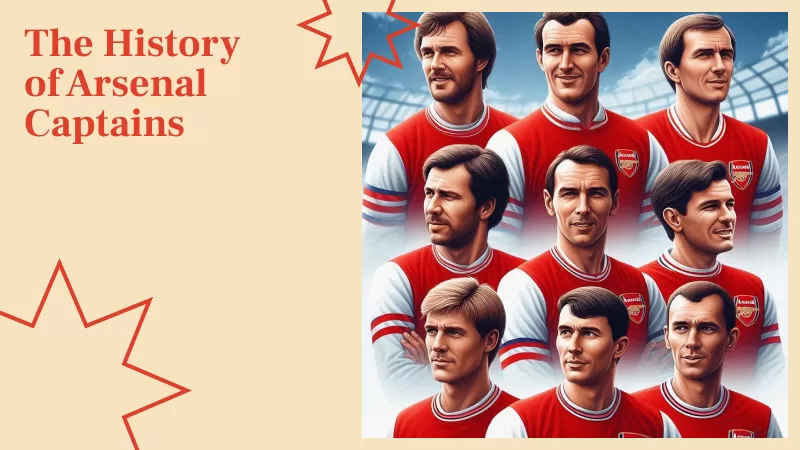
Arsenal was named Dial Square as they were known when the club was formed in 1886. Royal Arsenal were the first club of many to be captained by a string of leaders throughout its early years, and organized captaincy began with their break from anonymity. David Danskin was officially the inaugural Arsenal captain, playing a key role in forming the club.
Arsenal has had a succession of iconic captains over the years during their time in the Premier League. 1) Tony Adams (MR ARSENAL) – 1988-2002 He starred as a captain and quickly became an idol for the fans. A symbol of Arsenal’s resilience and passion, Adams captained the team to league and FA Cup glory on numerous occasions.
Vieira succeeded Adams as captain and enjoyed tremendous success in his tenure. The 2003-04 season, when Arsenal became ‘the Invincibles’ by avoiding defeat through an entire Premier League campaign (a feat never since managed in the English top flight). Vieira was a key driving force in this accomplishment with his strong and charismatic leadership. His control of the game from midfield and ability to spur on his team-mates were instrumental in ensuring that success.
Arsenal went into a period of experimentation with different captains after Vieira left. Arsenal legend, Thierry Henry brought an element of style and panache to the position in which he excelled; he was a breath-taking goal scorer While he was only the team captain for a very short period, that will not diminish his influence on and respect from this current squad. William Gallas and Cesc Fàbregas both captained the team during difficult periods — each offering a very different approach as captain.
Robin van Persie, Thomas Vermaelen and Laurent Koscielny have all captained Arsenal in the past few years. These players all had the task of meeting and finding their way in today’s era’s football while being compared to what came before them. Their spells were consistent with a club and the sport that had developed through its ups & downs.
Martin Ødegaard: The Current Arsenal Captain
Another in a respectable line of Arsenal captains before him, is the Norwegian playmaker Martin Ødegaard. Still only 22 years old — and already a prodigy in the world of football from his early teens, Ødegaard’s odyssey that began as one of Europe’s brightest young talents ended at Arsenal. He signed with Real Madrid at the age of 16, and while he struggled to see anything more than a few appearances for Spain’s most illustrious club during his time there, the promise was always apparent.
In January 2021, he joined Arsenal at the beginning of a temporary deal. The impact was immediate as his vision, creativity and leadership qualities were clear to be seen. However, Arsenal signed him permanently as recognition of his efforts in July 2022. Much of the reason behind Arsenal fans liking Ødegaard so much was down to his footballing intelligence, eye for an important assist and timing in scoring vital goals.
Ødegaard was the captain of the side and provided calm and direction to this team. Less bombastic than some of his predecessors, Sperling’s leadership style is no less effective. Heatherin and Veron We always eye more impressive displays from the young midfielder as a clear leader by example on the pitch. He has also been crucial in the team’s tactics and overall success albeit partnership from manager Mikel Arteta.
This partnership with Mikel Arteta has been nothing but respectful and measured from Ødegaard. Arteta understands the value of strong leaders having been an Arsenal captain, and that is what he sees in him. The relationship between Ødegaard, who has been given direction and a proper environment. It is clear to see he gets on really well with his teammates, Makes the dressing room feel a better place and more of collectiveness.
Odegaard’s Leadership Style and Impact on the Team

Then comes the cool, calm and collected nature of Arsenal captain, Martin Ødegaard. Ødegaard does not seem to be as troubled, or public about it and neither is he the angrier kind of a leader who likes fighting. His quiet presence on the field is also a calming influence for some of his teammates, especially in clutch moments. He is not a screamer, but leads with how he plays and the way that he shows up.
For me, one of Ødegaard’s best qualities is his reading. It allows him to make calculated decisions in a split second, if that’s for pairing a pass or clearing his lines on the last line of defense. His vision and creativity is an important asset to the team, he makes things up that most wouldn’t see or think of making against much his compatriot Ødegaard has brought a touch Scandinavian coolness to the Emirates Stadium which is good news for all Arsenal fans.
Nevertheless, his leadership style has its drawbacks. I think the fact that he is a bit reserved probably also means every now and again you might miss him in terms of his dressing room voice, or turning things around when it gets tough. His composure is almost always an attribute however at times the fiery nature of some other Coaches might be required to light a flame under the team.
The Gunners get their best results ever since Ødegaard was handed the armband in London. His leadership has brought a sense of normalcy that was desperately needed after some up-and-down seasons. The control in the tempo of the game that Ødegaard brings helps Arsenal to keep possession and dominate a certain style, which is pivotal within England football nation.
Arguably the biggest of impacts Ødegaard had on this team came in morale. There has been something of a togetherness with Arsenal supporters having the privilege of seeing for once, and now something new: some fight. And partly because of the bond Ødegaard has with his teammates, all players feel to be an important part in a whole. He does a fine job reaching them on a human level – making everyone feel comfortable in their own skin.
We saw Ødegaard lead from the front especially in the first legs of Arsenal’s Champions League fixtures. He was key to wins both on and off the field as through his hands appeared several vital needed victories. That has built belief internally in the squad, that they look up to their captain during important occasions.
And helping to foster such a positive culture within the team is one of Ødegaard’s key achievements as Arsenal captain. He brought discipline, professionalism and fostered creativity without compromising on freedom in play. The equilibrium is very much necessary in the world of football today, where tactical capability and artistic proprioception are not so varied as we once thought>)
Little by little, under Ødegaard’s captaincy,Arsenal players have been coming together more and more as a family. He is crucial in creating chemistry on the team and making sure new teammates fit right into place. Recognition of his relationship with young players should ensure he becomes a guiding hand in the toughest times at premier level.
Arsenal fans have shown massive respect for the Norwegian in return, viewing him as one of their own already. He has even silenced some of his most ardent doubters and won the hearts of fans with his down-to-earth manner. That relationship between the captain and fans is key – all part of really creating an environment at the Emirates Stadium which makes it a fortress for visiting teams.
The Role of the Captain in Arsenal’s Success
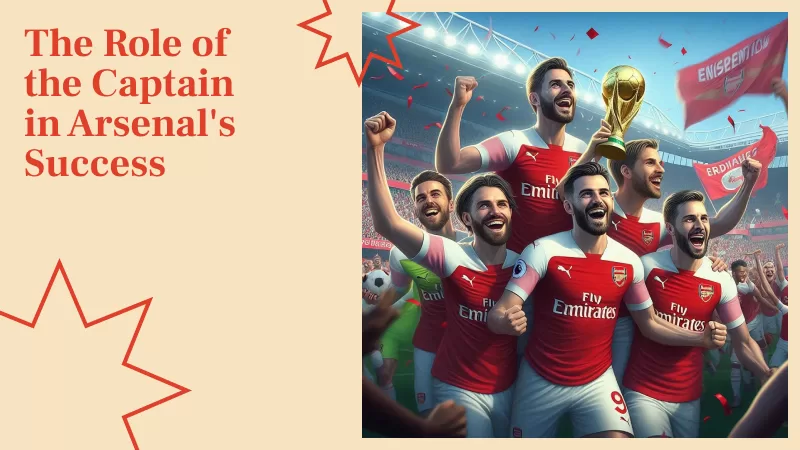
Being the captain of Arsenal Football Club is a huge job. And it is a position filled with history and relevance, carrying a burden that extends far beyond the armband itself. He is the face of Arsenal on and off the field tasked with rallying teammates, executing tactical decisions within games as well as representing his club in a variety of capacities.
The duties of a captain on the field can vary, with much responsibility to go around. They have to model that – the skill level has to be there, they’ve got to commit themselves completely and utterly in pouring their heart out kind of consistency. In games, the captain is the player who confronts the referee to represent team interest & also at critical moments takes necessary action very much quickly. For example, his composure in a high-stakes Premier League or Champions League match can be the difference between victory and defeat.
As much off the pitch, the captain has a role to play too. They act as an intermediary between the players and management to address any concerns that arise within a team. It takes a lot of know-how, not only what your own players want but also the expectations and aims from the club. The captain also leads the team off of reaction as well and should strive to keep a positive environment within his group.
Arsenal captains of the past such as Tony Adams and Patrick Vieira have been miles ahead in those qualities, historically. Adams – “Mr Arsenal” and all-action leader; Vieira- imposing figurehead on the pitch who dragged his team-mates through tough matches. The legacy of these captains is left behind for the next generation to walk in their footsteps.
It is often said that an Arsenal captain has a huge say in the fortunes of his team. They often contribute to the tactical conversation with a manager, making sure all players are aware of what is going on and how that relates to team play. Take for example the manager Mikel Arteta who is a former Arsenal captain and knows from first-hand experience how important good leadership can be. He works in close collaboration with the club captain, to together see that the objectives are achieved for their team.
There is too much that can be said about the captain motivating their team. Now, if the team is on a rough patch – it’s that same captain who lifts them and helps turn things around by putting more trust back into his/her players and focusing the troops. Which was quite clear this season, a few examples are that captain Martin Ødegaard played a crucial part by lifting the team’s morale which also then led to several great results.
The captain also contributes to team cohesion by making every player, whether they are starting or in the bench feel he is an important part of the success. It is important to have that inclusivity so a good positive team culture can be created and every player feels the best motivated.
Theirs is a relationship based on respect and partnership between captain and manager. They are dependent on each other in an intense way and have to get along very, very well for the team to function smoothly. The manager needs the captain to execute their plans on the pitch, and in return expects guidance and support from said player.
One of the most evident illustrations is Mikel Arteta and Martin Ødegaard. Arteta, who used to wear the armband himself while at Goodison Park and during his nine years with Arsenal 18 months as skipper between 2014 and 2016) knows what it takes both on the field in terms of influencing a game but also off it for maintaining high professional standards. It frees Ødegaard up to take control and be a leader. The combination has been crucial to Arsenal’s recent successes, with Ødegaard running the show on the pitch working in tandem with Arteta’s tactics.
Crucial is also the effective communication between captain and manager. The overall team strategy, goals and any mid-season adjustments that need to be implemented should all be agreed upon by the President & GM. This partnership helps ensure the team is on one accord and working towards common goals.
Some of Arsenal’s finest hours have been born from successful captain-manager pairings in the past. There, for example, the rapport of trust and collectivity between Patrick Vieira in association with Arsene Wenger during a season which has been labeled as that belonging to “The Invincibles.” His on-pitch leadership was the perfect foil for Wenger’s revolutionary tactics, culminating in an unbeaten Premier League campaign.
Legendary Arsenal Captains
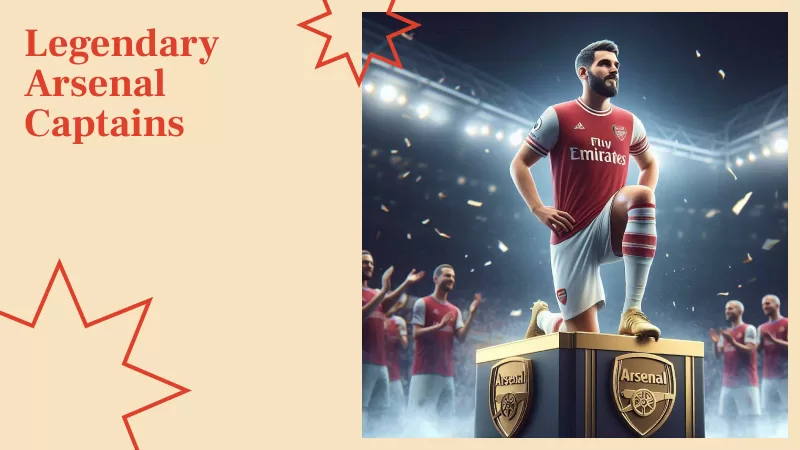
The captaincy at Arsenal is a job that carries with it the expectation of magnanimity — and for sure there have been some genuinely fantastic figures in football who have worn their arm band. Here, we take a look at a few of the most folktale captains who have historically adored and desired Arsenal Football Club.
Tony Adams: Mr. Arsenal
IT seems weird to think of Arsenal without mentioning Tony Adams. Mr Arsenal Adams played for all 22 years of his career at the club, from 1983 to 2002. He was an iconic figure to Arsenal fans and one of the most loyal players in their history too.
As such, Adams captained Arsenal to four league titles, three FA Cups, two Football League Cups and a UEFA Cup Winners’ Cup as well as two Community Shields. His defensive prowess, and his talent of reading the game was hard to beat — thus he effortlessly became a key figure at Arsenal; specifically in our backline during this time.
Tony Adams was famous for his ear-piercing captaincy on the field. He was never afraid to call out his teammates, but in a way that motivated people. We said goodbye to a man whose legacy is more than the trophies he won but also about the spirit and determination of his team. And so ingrained was the influence of Adams that he remains a standard for future Arsenal captains to try and emulate.
Patrick Vieira – The Undefeated Captain
Vieira replaced Adams as club captain, and has been Arsenal’s most successful period at the top level. After moving to the club in 1996, Vieira captained Arsenal into a new age of dominance, with his crowning glory being during their “Invincibles” season which took place between 2003-04.
Vieira was a key figure completing Arsenal’s first perfect unbeaten Premier League season in 2003/04, still the only undefeated campaign by any club since English football switched to its current points-based structure and out of trajectory just for sheer fun.TextUtils Vieira captained Arsenal to a trio of Premier League titles and four FA Cups.
Vieira built his leadership philosophy upon size and intimidated team members. He did so consistently with his strength, skill and sheer force of will. His undying quality and passion for the Arsenal Side has definitely entrenched him as one amongst leading captains with Arsenal forever.
Charismatic Goalscorer, Thierry Henry
Thierry Henry is generally considered as the best forward to play in world football. His tenure as Arsenal captain was brief but no less impactful. In 2005, Henry was named captain and supported the team until he left in 2007.
He then went on to become Arsenal captain, but was as prolific a scorer during this period – he did break the Gunners all-time scoring record. He was an instrumental figure in Arsenal’s run all the way to the 2006 Champions League final – a first for his side. They may not have gone through, but Henry shone.
Building a leadership style based upon his immense skill and personality, Henry was}}} As the main attacking force, he provided through his performances and won many matches for us. Henry’s captaincy is only part of a broader picture that comes with his status as an legendary player – famous for ability to deliver on the biggest stage.
The long-reaching shadows of these legendary captains are indelibly imprinted on Arsenal Football Club. This brings an example that leads to their standards which they have set up while teaching about different captaincy styles.
Modern Day: Martin Ødegaard
The captain of Arsenal today is Martin Ødegaard. Odegaard brings a different kind of leadership with the next star in line looking to continue building his rich legacy left by some accomplished stars that he has followed.
He initially signed for Arsenal on loan from Real Madrid in January 2021, before making the move permanent in July last year. He has been crucial in Arsenal’s chase for Premier League glory and a top-four finish ever since.
Although Ødegaard is not an outspoken leader. Ødegaard, unlike some of the more vociferous leaders they have had in years gone by, is instead simply one that does his talking on the pitch. His game-managing skills and big assists are clearly vital to the team’s success
The Future of Arsenal’s Captaincy
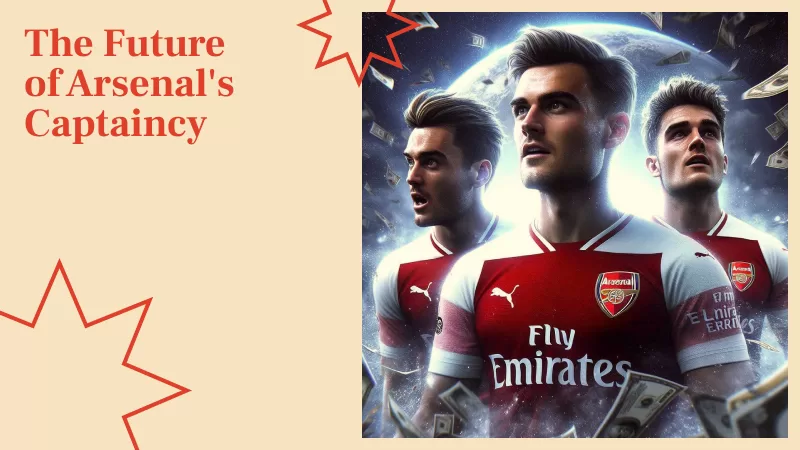
In the context of that future, fans must be wondering who will channel greats such as Tony Adams and Patrick Vieira before them; now Martin Ødegaard. Many Arsenal youngsters have the qualities required to step into this esteemed position in a few years due to them being developed at “Fortress Hale End”!
Bukayo Saka
Amongst them, one player who has a big hope in his name is Bukayo Saka. The England sensation has been a revelation since his arrival to the first team. His on-pitch displays, mature attitude off it and connection with Arsenal fans make him a key candidate for a future captain. His composure on the ball at a young age is second to none, his tenacious work ethic are all characteristics that echo deeply with Arsenal Football Club values.
Kieran Tierney
Kieran Tierney could be PNG future captain. Despite only being at the club for a short time, already Robertson has shown leadership qualities. Tierney: A dogged character with a trove of skill, the player is wholeheartedly embraced by team-mates and supporters alike. That international experience, combined with his consistent showings in the Premier League could well see him take over as captain.
Attributes of an Arsenal Captain
Captaining a well-known football club such as Arsenal entails various values. A few qualities of an Arsenal Captain you can find here:
An even better one would be required to communicate the tactics of the manager and boost his team at crucial points.chomp on this! In training & in games, They have to set an example
Football is a passionate game and when it comes to high stakes games such as those against Manchester United or an encounter in the Champions League, you can expect things to get overheated rapidly. A captain needs to show he is cool and level-headed, that even as the heat rises, his plans are being made rationally.
Given this, the minimum expectation is to demonstrate passion for their club and a desire to help make it successful. We require the captain to carry himself in the spirit of Arsenal tradition and uphold respect for club betterment. This drive frequently leads to stronger efforts and it motivates others into the same effort.
He talks about playing top-flight football with the youth national team and being respected among peers. The captain has to be astute and firm in his understanding of the game, purposeful with command over his team. A lot of this comes from years and years at the top, on the horse that is performing very well.
Conclusion
The role of the Arsenal captain is therefore one of the most prestigious and arguably challenging in world football. The captain has had a massive impact on the club’s history — from the days of Royal Arsenal to modern Premier League football. Some of the characteristics we identified as captains will still be necessary into the future, though: leadership ability; communication and composure both on-ice/in dressing room (or in this case team chat), passion for structure, orderliness/efficiency to succeed within game rules.
The future captains face massive challenges, but they also have an ocean of possibilities. This journey has all the navigating modern football dynamics, embracing diversity, balancing youth and experience and leading through transitions.
In Bukayo Saka and Kieran Tierney, Arsenal has emerging stars who the future of their captaincy could depend on.
The captaincy at Arsenal Football Club is not just a name; it’s leadership and legends. While Arsenal strive for Premier League titles and Champions League success, the captaincy will consistently be pinned at its heart. But the Gunners now are built on a solid legacy provided by past captains, pointing towards exciting times ahead with a new leader emerging to push Arsenal to great things.




